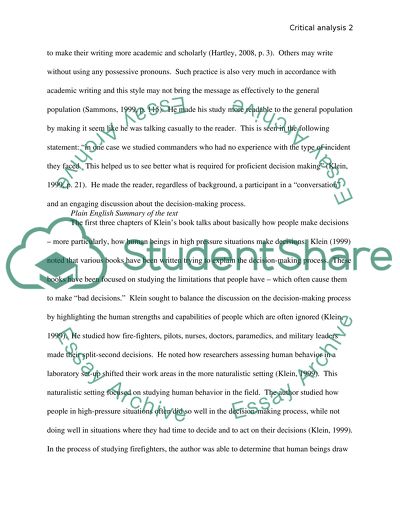Cite this document
(Sources of Power: How People Make Decisions by Gary Klein Book Report/Review, n.d.)
Sources of Power: How People Make Decisions by Gary Klein Book Report/Review. Retrieved from https://studentshare.org/psychology/1573680-sources-of-power-how-people-make-decisions-by-gary-klein
Sources of Power: How People Make Decisions by Gary Klein Book Report/Review. Retrieved from https://studentshare.org/psychology/1573680-sources-of-power-how-people-make-decisions-by-gary-klein
(Sources of Power: How People Make Decisions by Gary Klein Book Report/Review)
Sources of Power: How People Make Decisions by Gary Klein Book Report/Review. https://studentshare.org/psychology/1573680-sources-of-power-how-people-make-decisions-by-gary-klein.
Sources of Power: How People Make Decisions by Gary Klein Book Report/Review. https://studentshare.org/psychology/1573680-sources-of-power-how-people-make-decisions-by-gary-klein.
“Sources of Power: How People Make Decisions by Gary Klein Book Report/Review”. https://studentshare.org/psychology/1573680-sources-of-power-how-people-make-decisions-by-gary-klein.


